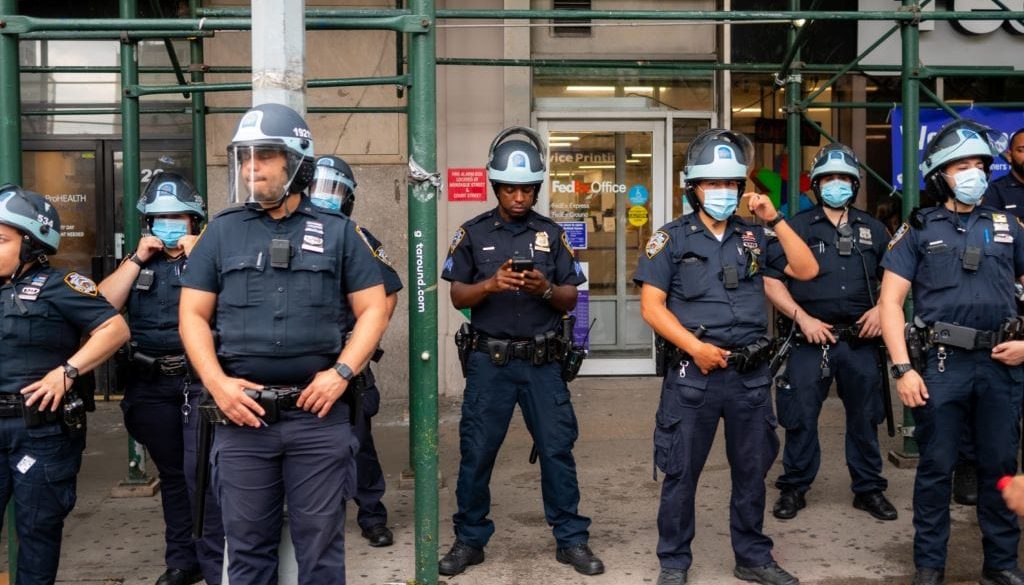Police Perception Report Reveals How Americans Rate Local Public Safety Services
Earlier this year, the software company Polco published an eBook in which responses to the 2020 National Police Services Survey and 2020 National Community Survey were analyzed to show how public perception of law enforcement has changed compared to previous surveys conducted in 2018. While the eBook makes an interesting reading, it is important to put its findings into context.By the summer of 2018, there had already been twenty-seven school shootings that year and thirty-nine teachers and students had tragically died. The mainstream media was driving public opinion towards tighter gun control and, as a result, fifty new gun control laws were passed before the fall semester. It is therefore not surprising that 98% of respondents to the 2018 National Police Services and National Community Surveys said the police should make school safety and security a priority.
Two years later in the summer of 2020, most schools had been closed since March due to the coronavirus pandemic. There had been six school shootings earlier in the year in which four people were killed, and – because they were not on the scale of Parkland – the mainstream media barely noticed them. Consequently, the number of respondents to the 2020 National Police Services and National Community Surveys who said the police should make school safety a priority fell by 20%.
If, in “How Residents See Public Safety Services Within Their Communities”, this drop in the importance of school safety had been put into context, it would have made sense. But it wasn’t. Neither were drops in the importance of traffic enforcement, drug enforcement, and controlling juvenile crime – which likely fell in respondents’ perceptions because fewer cars were on the street and there was less evidence of drug and juvenile crime activity during lockdown.
You Need Context to Get Visibility into an Issue and Find Solutions
The context in which responses to the two surveys were analyzed is important because it better explains fluctuations in public perceptions. For example, two safety issues that did receive media attention during the lockdown – domestic violence and child abuse – were obviously at the top of people’s minds when they completed the surveys in the summer of 2020 as these two issues saw the biggest increases in the number of respondents rating them a problem.
Similarly, the reporting of civil unrest following the murder of George Floyd likely influenced survey respondents to rate “increasing connections with the community” and “increasing resident access to the police” higher than in 2018 – notwithstanding that, during coronavirus lockdowns, it would have been difficult for law enforcement to connect with local communities or increase resident access to the police – or continue any of the great community work that went on before the pandemic started.
However, by not putting the findings of its analysis into context, the report risks misleading public safety officials about how public safety services are perceived. With context, it is possible to get better visibility into local safety issues to establish how they have occurred and find solutions. But, if – as the report suggests – Americans appear to be rating public safety issues based on the reporting of national events, how is it possible to get context into public safety issues at the local level?
How Geo-Polling Can be Used to Provide Granular Context of Local Safety Issues
Geo-polling is a capability of the Rave Alert platform that can be used to solicit public opinion within defined geographical boundaries. It works by inviting members of the community to opt in to receive important messages by texting a unique keyword to a short code number (i.e., text “SAFETY” to 723389) and then sending a mass text message to each member consisting of a question with multiple answers to choose from. An example of how this might work could be:
Q: Which of the following do you consider to be the most important community issue?
Press #1 for traffic violations
Press #2 for homelessness
Press #3 for gun violence
Press #4 for burglaries
Press #5 for litter
Opted-in community members respond to the question by pressing the corresponding number of their mobile phone keypad, and their answers are collated in the Rave Alert platform for review. It is possible to put a closing date on each poll and to automate secondary polls depending on how the recipient responded to the question.
Subsequent polls can be used to extract more granular contextual information, and get greater visibility into where, when, and how public safety issues occur. With this level of information, public safety officials can drive the narrative and make informed decisions about public safety policies.
Find Out More about Rave Alert’s Geo-Polling Capabilities
Rave Alert’s geo-polling capabilities can provide the depth of information required to enable more effective community policing and address many of the issues affecting the perception of local public safety services. If you would like to see how the theory works in practice, you are invited to get in touch and request a demo of Rave Alert. Our team of safety experts will be happy to tailor the demo to your requirements and answer any questions about the platform’s geo-polling capabilities.




